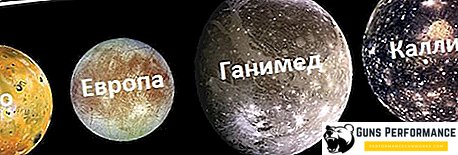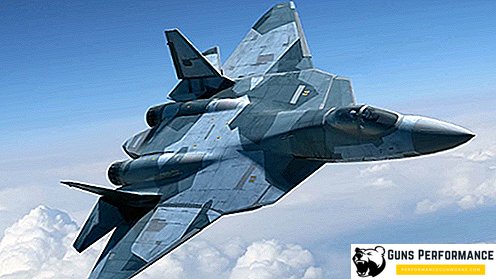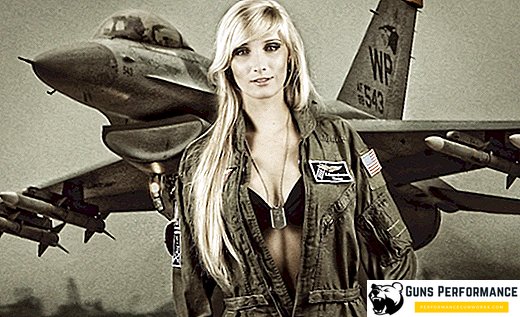Despite the development of military equipment, precision weapons and robotic weapons systems, small arms remain the main striking force of infantry units. The outcome of not only a specific clash, but also the entire campaign, often depends on how well armed a motorized infantry soldier is.

The army of the Russian Federation basically uses the small arms developed and made in the Soviet period. A Kalashnikov assault rifle is, without doubt, a reliable and effective weapon, but does it meet all the requirements of a modern war?
Despite its legendary reliability, simplicity and manufacturability, AK has significant drawbacks, the main one is its lack of accuracy. A Kalashnikov assault rifle was created to arm a huge conscript army in a large-scale military conflict. It was assumed that the training of a single fighter would not be too high.
However, today the situation has changed dramatically: the backbone of any modern army consists of well-trained professionals who need high-precision and efficient small arms. Kalashnikov assault rifle does not meet such requirements too much.

The automatic carbine AN-94 "Abakan" of 5.45 mm caliber, created by the weapons designer Nikonov, is an example of modern Russian small arms designed for real professionals. The AN-94 has phenomenal accuracy, but at the same time the weapon makes very high demands on the training of the fighter and his weapon culture.
Currently, "Abakan" is in service with special units of the Armed Forces and the Ministry of Internal Affairs of Russia, a full transition of the Russian army to these weapons is not planned.

History of creation
Already in the late 1970s, it became clear that the possibilities of modernizing Soviet small arms were exhausted. The Kalashnikov assault rifle did not meet the requirements of that time, let alone short-term prospects. When the Soviet army adopted 5.45 mm caliber cartridges, it was understood that in the near future, new types of small arms would be created under these munitions.
AK-74, designed for 5.45 mm cartridge, had a high speed of bullets and flatness of its trajectory, but its characteristics did not satisfy the military. The main problem was that the second and third bullets usually went aside about the target.
In 1978, the competition began to create a machine gun with a shooting efficiency twice as high as that of the AK-74. In other words, the designers had to create a machine with accuracy of 5-10 times higher than that of the AK-74.

In 1981, another contest was announced, it was called "Abakan".
Among the samples presented at the tests, there were models created according to the classical scheme, automatic machines with balanced automatics and samples with a displaced recoil impulse, among which were Nikonov and Stechkin's automatic machines.
Weapons made according to the classical scheme showed results far from the required ones; balanced automatic equipment improved the accuracy of shooting, but it was still lower than what was required in the task. Only the scheme with a displaced recoil pulse is fully consistent with the technical task. The best among the presented samples was recognized as an automaton, developed by Izhevsk designer Nikonov.
In 1986, Nikonov presented an improved version of his weapon, and in 1991 his tests began in the Taman Division. They showed that the accuracy of the Nikonov machine was several times higher than that of the AK-74, even inexperienced shooters showed good results.

In 1994, the Nikonov assault rifle was adopted and received the designation AN-94 "Abakan". It was originally planned to make the AN-94 the main weapon of the Russian army and replace the obsolete AK-74 with it. However, this did not happen. Abakan began to be mass-produced, but it never became a mass weapon. The reason is very simple: the Kalashnikov assault rifle is distinguished by its simplicity and low cost, and even schoolchildren in military training classes are dismantling it.
The construction of "Abakan" is much more complicated and requires a rather high technical culture from a fighter. Therefore, the AN-94 became the weapon of the elite units of the Russian army and special units of the Ministry of Internal Affairs. At present, the prospects for this weapon are rather vague.

“Abakan” really has the advantage in shooting accuracy over any modifications of the Kalashnikov submachine gun (and indeed many models of foreign weapons), but it’s not a good idea to arm them with draftees. The AN-94 is well suited for special operations, during which accuracy, not fire density, is important. At present, other models of small arms have been created that are better suited to re-equip the mass draft army.

Description of construction
Its form AN-94 "Abakan" is very similar to the Kalashnikov assault rifle. The scheme of the machine is classic - with the front of the store, and the pistol grip with the trigger mechanism is at the back. In place of the bed at the AN-94 is a casing of the monitor type, inside it along the guides the barrel is connected, connected with the receiver. Automation works due to the free rollback of the firing unit, consisting of the barrel and receiver. The barrel is locked by turning the bolt.

The design of the machine is designed so that the impact affected the weapon after the bullets left the barrel.
The receiver contains a bolt carrier, bolt and trigger mechanism. The fuse and translator of fire are separated, they are located on the left side of the case. The case of "Abakan" is made of high impact plastic steel.

Inside the case under the receiver is a return spring, so the store is shifted to the right.
Under the barrel is a lever that supports the barrel during its withdrawal back after the shot. The principle of its work is taken from artillery.
"Abakan" has three modes of firing: single, automatic and with a cut-off of two shots. With a two-shot fire mode, the rate of fire can reach 1800 shots per minute, and when shooting with bursts, 600 shots, which equals the rate of the Kalashnikov assault rifle.
Aim devices consist of a diopter pillar and a front sight in the earphone. Food AN-94 is made from regular stores from AK-47 or RPK, with a capacity of 30 and 45 rounds. The butt is made of shock-resistant plastic, it can be folded.

On the "Abakan" you can install a grenade launcher. The bayonet is not located on the bottom, but on the right. The AN-94 is equipped with an unusual closed-type muzzle brake-compensator, whose shape resembles the figure eight. On the machine can be installed a variety of night and optical sights.
After the first shot, the firing unit rolls back and feeds the cartridge from a special intermediate chamber. Almost immediately the second shot happens. And only after that the slide frame hits the back of the case and the shooter feels recoil and it does not affect the accuracy of the two shots.
If the weapon is working in automatic fire mode, then the reloading of the second cartridge during rollback does not occur.

Reviews
An-94 "Abakan" significantly exceeds the AK in the shooting mode with two cartridges. The accuracy of the weapon in this case is really impressive: a good shooter at a distance of one hundred meters can put two bullets into almost one hole on the target. However, with the single and automatic shooting mode, the Abakan has almost no advantage over the AK-74. Shooting with a cut-off of two rounds significantly increases the effectiveness of the weapon.

However, the design and disassembly of the machine is much more complicated than the AK-74. When disassembling the AN-94 is divided into thirteen parts, including a cable, roller, two springs. Muzzle brake-compensator is very effective, but when you clean it is very difficult. Despite the complexity of this weapon, the Abakan is very reliable and in capable hands is indeed a very effective and formidable weapon.
Attention should be paid to the ergonomics of the Abakan. It is no better than the Kalashnikov assault rifle and is significantly inferior to the world's best small arms. Today, the AN-94 "Abakan" is produced in small batches in Izhevsk. The question of the rearmament of this machine with the Russian army has been removed from the agenda finally.




